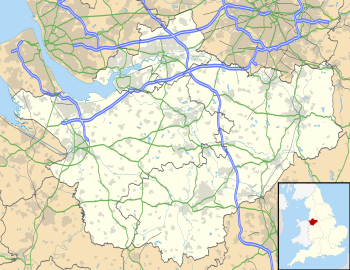Peter (in office from 1322; died 1339/1340) was an English Cistercian abbot who served as the fifth abbot of Vale Royal Abbey, Cheshire, in the first half of the 14th century. He is generally held to be the author of the abbey's own chronicle, which was published in 1914 as the Ledger of Vale Royal Abbey. Owing to a failure to finish the abbey's building works—which had commenced in 1277 and had been intermittently ongoing ever since—the abbey was unsightly, and the monks' quarters probably near derelict. Abbot Peter oversaw the transplantation of the house onto new grounds. Much of his career, however, was focussed on defending his abbey's feudal lordship over its tenants. The dispute between the abbey and its tenantry had existed since the abbey's foundation; the abbot desired to enforce his feudal rights, the serfs to reject them, as they claimed to be by then freemen. This did not merely involve Abbot Peter defending the privileges of his house in the courts. Although there was much litigation, with Abbot Peter having to defend himself to the Justice of Chester and even the King on occasion, by 1337 his discontented villagers even followed him from Cheshire to Rutland. A confrontation between Abbot Peter and his tenants resulted in the death of a monastic servant and his own capture and imprisonment. With the King's intervention, however, Abbot Peter and his party were soon freed.
Abbot Peter's quarrels were not with just his tenantry. He was engaged in a long-running lawsuit with the abbot of Shrewsbury—for which he was summoned to appear before the archbishop of York, and successfully defended himself—over Vale Royal's claim to the advowson of the church of Kirkham. He was also involved in a feud of some description with the local gentry. This, it seems, was to be fatal. Little is known of this dispute, but, as a result of the feud—still attempting to defend his abbey and its rights as he perceived them to be—in 1340 he was killed during an incursion in which many monastic buildings and goods were burnt. He was succeeded as the abbot of Vale Royal by Robert de Cheyneston.
